Mastering the Art of Getting Up in Wake Surfing
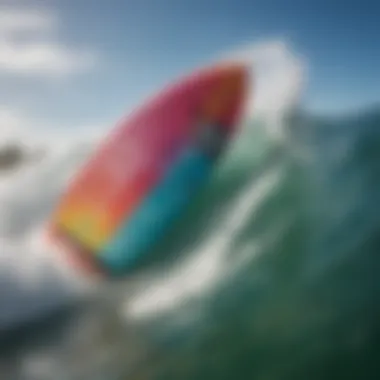
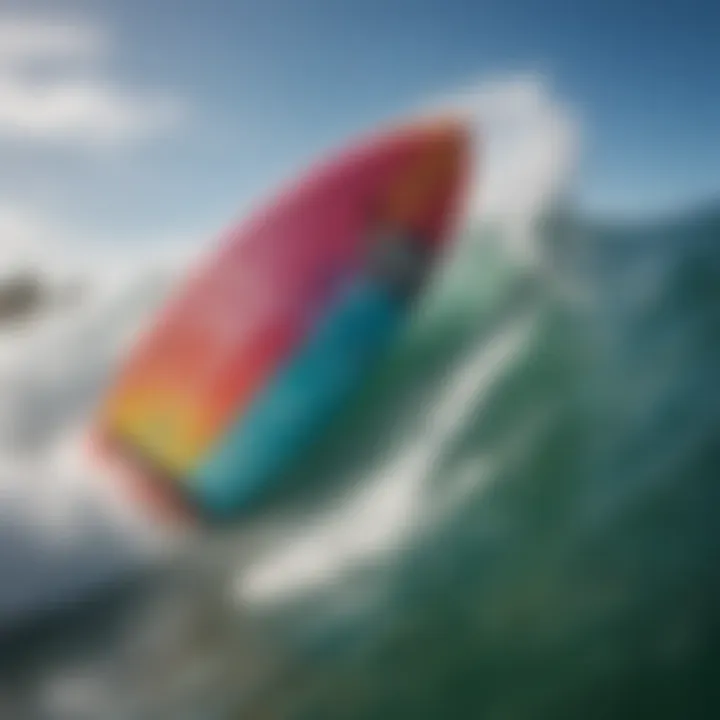
Intro
Getting up on a wake surfboard can feel like trying to teach an old dog new tricks. It looks deceptively simple when you see someone gliding effortlessly over the water, the boat pulling them along. But there’s more to it than just hopping onto a board and hoping for the best. Mastering the art of getting up and riding is essential not only for enjoying the thrill of wake surfing but also for safety on the water. This guide will dig into everything you need to know, from gear recommendations to techniques and safety practices that will help you navigate this exciting watersport with ease.
Gear Recommendations
Choosing the right gear can make all the difference when you're trying to get up during wake surfing. Here, we’ll break down the essentials for newcomers and what professionals might need.
Essential Gear for Beginners
When starting, the right gear can feel like finding gold in a haystack. You want equipment that’s user-friendly, safe, and durable. Here are the key items:
- Wake Surfboard: Choose a board that's the right size for your weight and skill level. A thicker board is often easier to balance on.
- Life Vest: A good personal flotation device not only keeps you safe but also provides buoyancy, which makes it easier to recover after a wipeout.
- Tow Rope: While some surfers prefer a short rope for advanced maneuvers, beginners should use a longer, thicker rope. This helps maintain distance from the boat as you learn to balance.
- Wetsuit: Depending on the water temperature, a wetsuit can provide insulation, comfort, and protection against abrasions.
These items will ease your entry into the sport, making the learning curve a tad less steep.
Advanced Equipment for Professionals
Once you’ve mastered the basics, enhancing your performance often means investing in more advanced equipment. If you’re serious about wake surfing, consider:
- Custom Wake Surfboards: These are tailored to your specific style and weight, allowing for sharper turns and better control.
- Specialized Tow Ropes: A customized tow rope with ergonomic handles can suit different types of tricks and styles.
- High-Performance Life Vests: For experienced surfers, these vests offer greater mobility and less bulk, allowing for greater freedom of movement.
- Hydration Pack: Staying hydrated is crucial, especially in hot weather, so having a way to drink water while riding can be beneficial.
Techniques and Tips
Now that you’re geared up, it’s time to tackle the techniques needed to successfully get up during wake surfing.
Skill Improvement Strategies
Getting up on a wake surfboard takes both practice and patience, but here are some strategies to speed up your progress:
- Positioning: Sit on the board with your knees drawn in and your back facing the boat.
- Timing: When the boat accelerates, hold onto the rope tightly. As soon as you feel the pull, slowly stand up by pushing through your legs.
- Foot Placement: Your feet should be placed shoulder-width apart, with your weight centered over the board.
Remember, it’s like learning a dance. It requires rhythm and balance.
Safety Practices and Guidelines
Before you hit the water, ensure you understand the safety aspects:
- Always Wear a Life Jacket: Even if you’re confident about your skills, safety comes first.
- Know Your Environment: Be aware of your surroundings, including other boats, obstacles, or changes in the weather.
- Learn Hand Signals: Establish signals with your boat driver, so communication is clear while you’re out there.
"Safety isn’t just a rule; it’s part of enjoying the ride."
Following these tips could enhance not only your enjoyment of wake surfing but also contribute to a secure learning environment.
In summary, getting up on a wake surfboard isn't just about finding the right board or the perfect wave; it’s about combining the right gear with sound techniques and safety precautions. Make sure to practice your balance on solid ground first, and as you blend these elements together, you might find that riding the wake is not just a thrill, but an art form waiting for you to master it.
Understanding Wake Surfing
Wake surfing holds a special place in the world of watersports. At its core, it's not just about standing on a board; it's about balancing on the ever-moving wake created by a boat. Understanding wake surfing encompasses a myriad of elements that can drastically enhance the experience, whether one is a newcomer or someone looking to refine their skills.
One vital aspect of understanding wake surfing is recognizing its unique characteristics compared to similar sports. Unlike wakeboarding, where bindings secure you to the board, wake surfing allows for a more freestyle approach. You surf freely on the wake, utilizing its momentum without being tethered. This liberating sensation can transform the way people view water sports, making it more accessible and enjoyable.
Moreover, having a grasp on the history of wake surfing enriches the experience. It connects enthusiasts to the roots of the sport, fostering a sense of community among surfers. Also, being aware of safety practices, equipment requirements, and effective techniques is crucial. Not just for performance, but for ensuring that every session on the water is safe and fun.
In short, understanding wake surfing is foundational. It lays the groundwork for the techniques and insights covered in later sections, aiding athletes and enthusiasts alike in their journey. The better one understands the sport, the more fulfilling the ride. So let's plunge into what makes wake surfing truly captivating.
What is Wake Surfing?
Wake surfing involves riding a surfboard on the wake created by a moving boat. Unlike traditional surfing, where one paddles out to catch waves, wake surfers let the boat's wake propel them. Typically, the boat moves at slower speeds, which allows the surfer to maintain control as they ride the wake's crest. Importantly, the surfer does not hold onto the boat; they let go of the rope after getting up, fostering a more natural, surf-like feel. This distinction is what makes the activity distinctively enjoyable.
History of Wake Surfing
The origins of wake surfing can be traced back to the late 1980s when innovative boat enthusiasts began experimenting with different towing techniques. Originally a byproduct of wakeboarding, it took off as surfers yearned for something that echoed the ocean experience. Over the years, the sport evolved with better equipment, improved boat design, and a growing community of lovers. Today, wake surfing boasts a rich culture, with competitions and social meetups around the globe. The sport has matured, inviting everyone from novices to seasoned pros to get involved.
Differences Between Wake Surfing and Wakeboarding
While both sports take place on water and involve riding a board, there are crucial differences:
- Bonding to the Board: In wakeboarding, riders are strapped into bindings, providing support and control. In contrast, wake surfers ride without bindings, allowing for more freedom of movement.
- Rope Usage: Wakeboarders typically hold onto a rope for balance throughout the ride. Wake surfers, after getting to their feet, can release the rope and ride the wave naturally.
- Speed and Style: Wakeboarding often requires higher speeds (usually 18-25 mph), while wake surfing operates on much slower speeds (10-12 mph). This difference leads to distinct riding styles, with wake surfing concentrating more on grace and flow rather than tricks at heightened velocities.
Ultimately, while they share common roots, wake surfing and wakeboarding cater to different experiences and skill sets. Knowing these distinctions helps enthusiasts choose the right path that resonates with their passions.
Equipment Required for Wake Surfing
When it comes to wake surfing, using the right equipment is paramount. This sport hinges on the precise balance between the surfer, the surfboard, and the vessel. Thus, understanding what to have in your arsenal not only enhances your performance but also ensures safety on the water. From boards to safety gear and the boat setup, each element plays a vital role in your wake surfing journey.
Choosing the Right Wake Surfboard
Selecting the correct wake surfboard is akin to finding the right shoe for a marathon. Various factors come into play here. You’ll want to consider the board’s size, shape, and construction material.
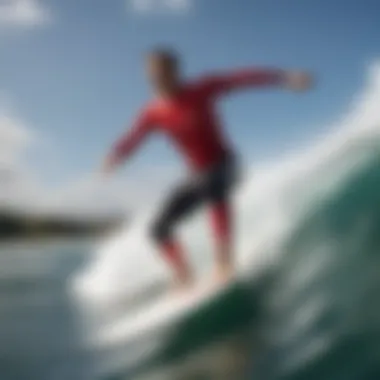
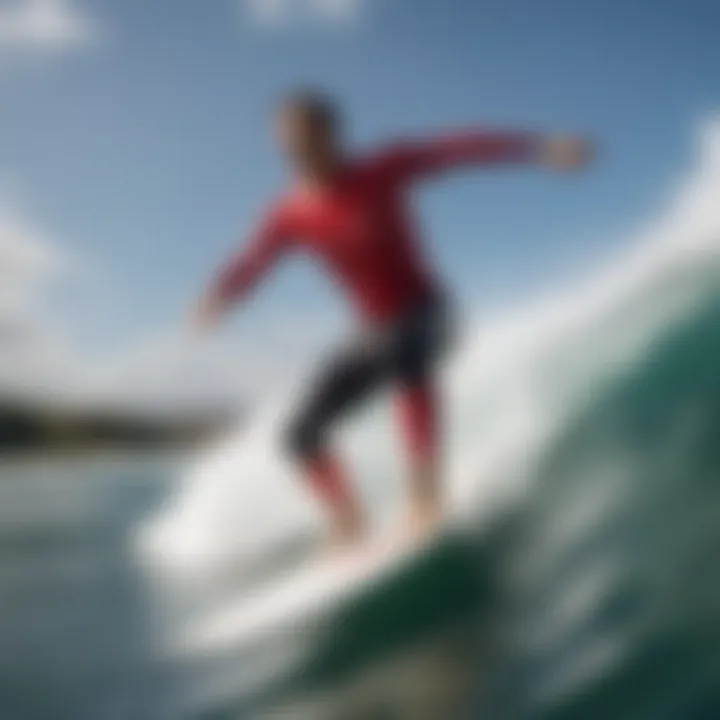
- Size: Typically, the size of the board is determined by your weight and skill level. Heavier surfers may benefit from larger boards that provide more buoyancy, while seasoned surfers might opt for a smaller, maneuverable board.
- Shape: Boards can either be thruster, which has three fins and offers better control, or twin-tail, which provides a looser feel. Knowing what suits your style can change the game.
- Material: Boards can be made from foam, fiberglass, or epoxy, each material gives a different riding experience.
A well-chosen board helps to stabilize you while attempting to stand up, ultimately giving more control as you ride the wake.
Life Jackets and Safety Gear
Safety, above all, should never be relegated to the back burner. A life jacket is essential. It doesn't just keep you afloat; it provides an extra layer of security while you’re mastering your technique.
- Type III PFD: A floatation device designed for water sports is ideal. Look for one that allows for freedom of movement—tight but breathable. A poorly fitted jacket can hinder your attempt to stand or shift your balance.
- Other Safety Gear: Don’t overlook the importance of leg ropes and helmets. Some surfers also opt for impact vests for additional protection against falls. Each piece of gear brings peace of mind, allowing you to focus on enjoyment instead of worry.
Boat Selection and Setup
The boat you choose is the engine behind your wake surfing experience. A well-designed towboat makes a world of difference. Look for specific features:
- Ballast System: Ballasts help create a larger, more manageable wake. This is crucial, especially for beginners who need that extra push to rise without struggling.
- Wake Shaping Tabs: These allow riders to customize the shape of the wake, improving performance and granting more options to the surfer.
- Speed Control: Maintaining a constant speed of around 10 to 12 mph is key. Modern boats often come equipped with cruise control options suited for wake surfing.
"A skilled operator can make or break your session. Choose wisely!"
While having the right setup is important, communication with your driver cannot be understated. A tight-knit team working smoothly together can turn a surfing session from mediocre to extraordinary.
In essence, equipping yourself with the right gear is the foundation of a successful wake surfing experience. Prioritizing quality and safety ensures your time on the water is enjoyable and productive.
Physical Preparation and Fitness
Physical preparation and fitness play a fundamental role in mastering wake surfing. This sport demands both strength and agility, and your body needs to be ready to handle the dynamic movements involved.
Engaging your muscles correctly during surfing is not just about looking good on the board. It’s about improving your overall performance and reducing the risk of injuries. When your body is prepared, you can respond better to the rigors of each ride, which means more fun and less frustration on the water.
Building Core Stability
Core stability is at the heart of all physical activities, and wake surfing is no exception. Your core muscles include the muscles of your abdomen, hips, and lower back. A strong core helps to maintain balance, which is crucial when you're trying to get up on the board.
When you’re starting out, it’s easy to feel like you’re wobbling or losing control. Strengthening your core can help with this instability. Here's how to build a solid foundation:
- Plank Variations: Try side planks and traditional planks to enhance your core stabilization.
- Medicine Ball Exercises: Tossing a medicine ball can help with coordination and strength in your core.
- Balance Boards: Practicing on a balance board mimics the movements of wake surfing and develops your stability.
Focusing on these exercises not only prepares your core but also improves your posture and body awareness, giving you the edge you need while out on the water.
Strength Training for Wake Surfing
Strength training is another critical aspect when preparing physically for wake surfing. You don't need to bulk up like a bodybuilder, but enhancing your strength can help you pop up more easily and ride the wave with confidence.
Incorporate exercises that target your legs, back, and shoulders:
- Squats and Lunges: Develop leg power which is essential for those explosive movements.
- Deadlifts: Strengthens your back and core simultaneously.
- Push-ups: Build upper body strength needed for pulling yourself up on the board.
Consider bodyweight exercises if you’re just starting out. Gradually introduce weights to your training once you feel comfortable. Quality over quantity is key, ensuring you perform each exercise with the right technique to maximize benefits.
Flexibility and Balance Exercises
Flexibility is often underrated, but it can significantly improve your overall wake surfing experience. Being able to twist, bend and maintain a low center of gravity allows for smoother movements on the water.
To enhance your flexibility, try incorporating the following exercises into your routine:
- Yoga and Stretching Routines: Classes focused on hip openers and back stretches can aid in achieving greater flexibility.
- Dynamic Stretching: Before heading out, perform stretches that mimic movements used in wake surfing.
- Balance Training: Activities such as stand-up paddle boarding or even gym exercises like single-leg balances reinforce the importance of maintaining equilibrium.
Balancing your workouts to include flexibility and balance training together will ultimately lead to a more enjoyable and successful wake surfing experience.
"Training your body for wake surfing is about skillfully integrating strength, balance, and flexibility for peak performance on the water."
Embracing these elements of physical preparation will lead to gains not only in your wake surfing ability but also in overall physical fitness, laying a solid foundation for long-term enjoyment of the sport.
Techniques for Getting Up on a Wake Surfboard
Gaining the ability to get up on a wake surfboard is a pivotal skill that can dramatically elevate your experience on the water. This segment focuses on the techniques you need to master, ensuring that your approach is not only effective but tailored to both beginners and those who have some familiarity with wake surfing. Understanding these key elements helps identify the nuances involved in getting up effectively, which leads to a more enjoyable ride and minimizes frustration.
The Starting Position
Starting in the right posture is crucial. If you can envision it, you’re almost like a coiled spring, ready to release the energy. Begin by sitting in the water with your board underneath you, ensuring it’s facing the boat. It’s essential to have your legs extended behind the board while keeping your knees slightly bent. Hold the tow rope with both hands, positioning it close to your chest, which anchors you as the boat begins to pull.
A common pitfall is to lean back instead of maintaining a forward stance. Visualize your weight distributed evenly across the board; doing this prevents unnecessary digging of the board's nose into the water. To wrap it up, the earlier you nail this starting position, the smoother your transition will be into standing on the board.
Engaging the Boat for Lift
Once you're in position, the next step is hinging on the engagement with the boat. Think of this moment as a dance between you and the boat—it needs to know when to lead. As the boat starts to pull away, you must gradually apply pressure against the tow rope. Timing is everything here. Let the boat’s force propel you without yanking your arms, keeping the connection gentle.
A good tip is to visualize yourself standing up rather than trying to yank yourself up. By doing so, you can generate lift as the board moves onto the surface of the water. To further facilitate this lift, push your feet firmly into the board as you rise. Maintaining that pliable stance can be the secret to success, making it imperative to find that delicate balance.
Maintaining Balance and Control
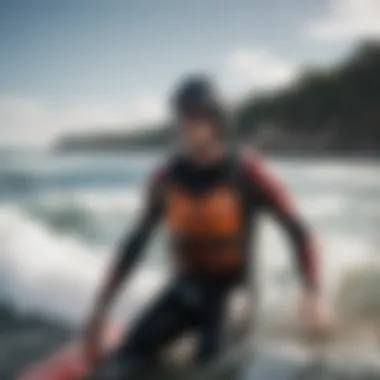
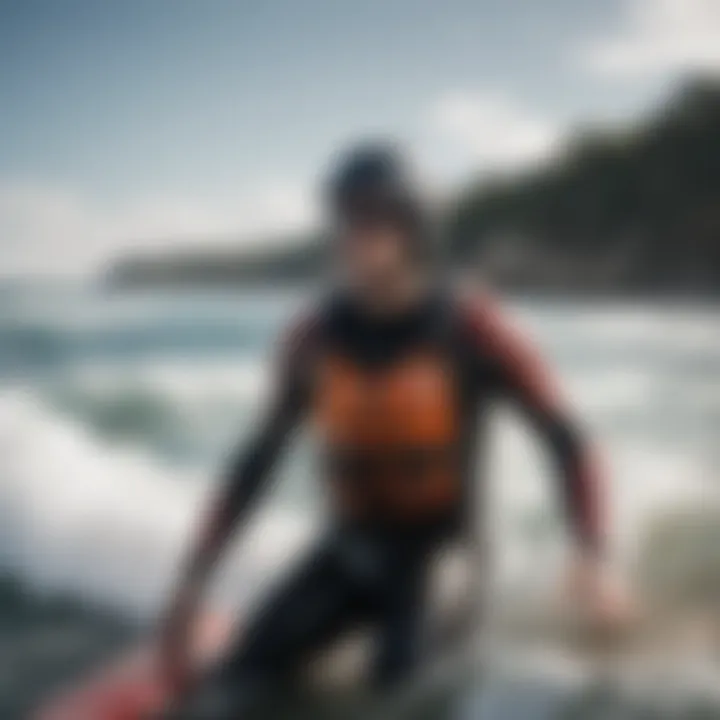
Lastly, once you're up, the focus shifts to preserving balance and control. It’s natural to feel a sense of excitement, but keeping it together requires concentration. Your knees should be slightly bent, offering a good center of gravity. Lean into the direction of your toes; this helps in stabilizing your position.
A crucial detail is to keep your arms straight in front of you while maintaining a slight bend in your elbows. This method keeps your core engaged and your shoulders aligned.
"The key to riding the wake is understanding that balance and control come from the core, not just your legs."
In managing the board, make small shifts in weight instead of large movements, as this prevents sudden losses of balance. Don’t forget to keep your head up and gaze forward; where your eyes go, the body will follow. This puts you in tune with the board and creates a smoother ride.
By investing time to master these techniques, you will find your wake surfing experience enriching, as each outing becomes less about struggling to get up and more about enjoying the ride.
Common Challenges and Solutions
When it comes to wake surfing, there are bound to be bumps along the road. This passion for gliding behind a boat is exhilarating, yet it comes with hurdles that every level of surfer will encounter. Understanding these common challenges and how to tackle them is crucial because it shapes how quickly one can improve and enjoy the ride. With the right knowledge, you can turn your struggles into stepping stones toward mastery.
Falling Backwards: Causes and Tips
One of the most common mishaps for newcomers is falling backwards. Whether it's due to improper lean or the boat’s pull, it can be frustrating. So, what usually causes this?
- Wrong Starting Position: If you're not aligned correctly on the board, you might find yourself tipping back the moment the boat accelerates.
- Excessive Leaning Backwards: When trying to haul yourself up, it’s easy to lean back, thinking it's helping. Instead, that way might just send you straight into the water.
- Losing Tension in the Rope: Relaxing too much can lead to a lazy pull, which doesn't help maintain your balance.
To counteract these issues:
- Focus on the Core: Engage your core muscles to maintain stability as you rise.
- Body Position: Keep your knees bent and your weight centered over the board as you start.
- Rope Tension: Maintain tension in the rope throughout the process.
"Falling is part of the game, but learn to fall forward, not backward. "
Struggling with Stance: Adjusting Your Feel
Your stance on the board can significantly affect how well you stay upright. If you feel like your feet are all over the place when trying to catch a wave, you're not alone.
Some common issues include:
- Overly Wide or Narrow Stance: Finding the perfect balance for your feet is key. Too wide and it may feel cumbersome; too narrow, and you could lose stability.
- Incorrect Foot Position: Your back foot should ideally be right above or just slightly behind the fins to help control your direction.
- Body Alignment: Keeping your body aligned with the board ensures that your weight distribution is optimal.
To find the right feel:
- Experiment: Don't hesitate to adjust your foot placement slightly until it feels comfortable.
- Practice on Land: Stand on your board without the water to find a solid and balanced stance.
Riding the Wake: Enhancing Your Experience
Once you manage to get up and maintain your stance, the reward is riding the wake itself. Many surfers find this part exhilarating, but it does bring its own set of challenges. Understanding how to maneuver effectively keeps the fun alive while minimizing accidents.
Here are some tips to enhance your experience while riding:
- Reading the Wave: Pay attention to how the wake forms behind the boat. Understanding where the best waves are is crucial for maintaining balance and speed.
- Using Your Legs: Bend your knees slightly and use them to absorb the movements. This helps in maintaining a smoother ride.
- Turn with Intention: When you want to turn, lean into the direction you want to go rather than just shifting your weight.
By focusing on these aspects, you can elevate your ride from novice to something truly enjoyable. Remember that patience is key while you navigate through these obstacles; improvement comes with time and practice.
Safety Practices on the Water
Understanding safety practices while wake surfing can make or break the entire experience. It’s not just about having fun on the water; it’s also crucial for ensuring that everyone involved can enjoy the ride without incidents. Proper safety measures are essential in minimizing risks associated with wake surfing, which is an activity that inherently involves being towed by a boat and navigating unpredictable waters.
Understanding Water Conditions
Before even stepping foot on your wake surfboard, understanding the water conditions is pivotal. Factors such as wind direction, wave size, and current strength can greatly influence how smoothly the ride goes.
- Wind Direction: A steady breeze can create rough waters, making it hard to maintain balance. Optimal conditions are often calm to slightly breezy, as it ensures manageable waves.
- Wave Size: It’s wise to avoid overly large waves, especially for beginners. Start with smaller, gentler wakes, as this will help cushion the learning curve.
- Current Strength: Fast-moving currents can lead to a chaotic surf experience. Always check local reports or ask seasoned surfers about the current conditions before hitting the water.
"It's better to be safe than sorry—always check the wave reports and local conditions."
A solid grasp of these elements will help you navigate your wake surf experience more safely and effectively.
Importance of Spotters and Communication
When you’re wake surfing, having spotters becomes paramount. They’re not just there to cheer you on; their role enhances safety significantly. Having someone keeping a close eye on the surfer while another operates the boat ensures that everyone is aware of the situation right away.
- Watchful Eyes: Spotters can alert the boat driver to any issues or obstacles that the surfer might not see.
- Communication is Key: Establishing clear signals beforehand can significantly reduce confusion when you’re out on the water. Whether it’s a thumbs-up to say you're good to go or a wave of the hand for help, these simple signals are effective.
- Quick Response: If something goes wrong, a spotter can quickly guide the driver to the surfer’s location for a prompt retrieval.
Emphasizing safety through effective communication and having dedicated spotters can drastically reduce risks involved in this thrilling sport.
Emergency Situations and Response
No matter how cautious you are, accidents happen, and it's best to be prepared for them. Knowing how to respond to common emergencies can mean the difference between avoiding serious injury and facing a dangerous situation.
- Capsize: If you fall off your board, keep your limbs close and signal to the boat to stop. The driver should always be trained to turn off the engine once they see a fallen surfer.
- Injury Management: Minor cuts and scrapes are common. Have a first aid kit onboard and ensure someone knows how to use it.
- Panic Environment: If a surfer feels disoriented or panicked after falling, remind them to stay calm. You can even practice techniques on how to get back to the boat should such a situation arise.
In summary, only an ounce of prevention can stave off a pound of cure. Keeping safety first not only guarantees exhilarating wake surfing sessions but also makes sure everyone stays in one piece for another day on the water. The joy of wake surfing is best experienced when safety is woven seamlessly into every ride.
Improvement Tips for Aspiring Wake Surfers
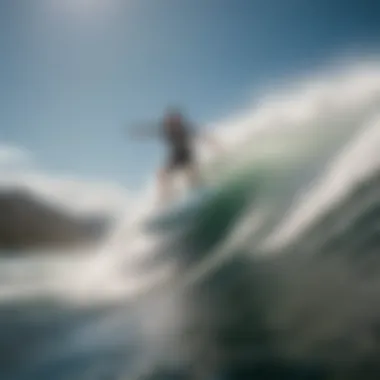
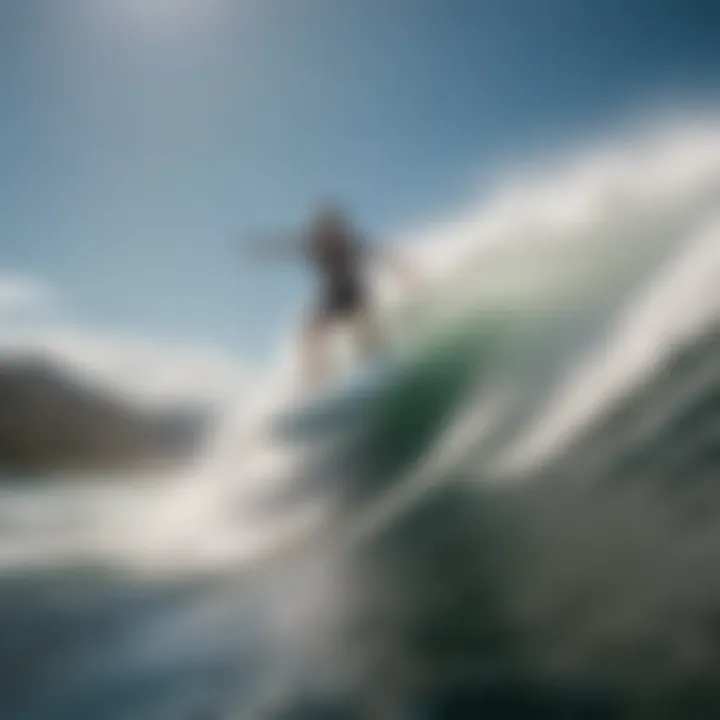
For those dipping their toes (or boards) into the world of wake surfing, there’s nothing quite like the rush of gliding across the water. Yet, mastering the art of getting up on that board can often feel like trying to juggle while riding a unicycle. Improvement tips are not just helpful; they’re essential for anyone serious about elevating their skills on the water. Whether it’s about refining technique or grasping the nuances of balance, these tips will provide a framework for growth, helping you transition from a novice to a more confident surfer.
Analyzing Your Technique
Consistent progress in wake surfing largely hinges on the ability to analyze and refine your technique. Watching yourself ride, even in informal settings, can offer surprising insights. Pair this with feedback from peers or more experienced surfers, and you’ll find yourself absorbing crucial information that might escape your notice otherwise.
Consider these key aspects when analyzing your technique:
- Foot Placement: Ensure your feet are correctly positioned on the board; a small adjustment can lead to considerable differences in your balance and control.
- Body Position: Is your body aligned with the board? Keeping your knees slightly bent and your torso centered will improve your stability.
- Arm Placement: Check how you’re holding onto the rope. Your arms should be extended but relaxed, enabling the boat to pull you up without resistance.
"When you watch yourself ride, pay attention. Sometimes it's the subtle movements that make a big difference."
Video Feedback and Coaching
In our tech-savvy world, capturing your ride on video can be more beneficial than you'd first think. Not only does it allow for an objective review of your performances, but it also gives you the chance to spot mistakes you didn't even realize you were making. Moreover, sharing your footage with a coach or trusting friend can fast-track your learning by putting a spotlight on what needs tweaking.
Here are some actions to consider when utilizing video feedback:
- Review After Each Session: After a day on the water, take some time to watch the video. Look for patterns in your falls or difficulties in getting up.
- Seek Professional Coaching: If possible, work with a professional coach who can analyze your footage and offer personalized tips based on their expertise.
- Set Comparisons: If it’s viable, compare your clips to those of experienced surfers to understand differences in technique and balance.
Setting Realistic Goals
Like any athletic pursuit, setting realistic goals is vital to your growth in wake surfing. Having a clear, achievable target not only helps to maintain motivation but also creates a sense of direction in your practice sessions. Whether you’re looking to improve your speed, increase your time on the wake, or master a trick, it’s important to break these aspirations into smaller, manageable steps.
Here's how to structure your goals:
- Short-Term Goals: Focus on immediate improvements, such as perfecting your start-up technique or increasing your ride duration. Small achievements build confidence.
- Mid-Term Goals: Aim for objectives you can achieve over several weeks, like successfully riding for a specific distance or learning how to adjust your stance mid-ride.
- Long-Term Goals: These can encompass broader ambitions, such as effortlessly riding without the rope or mastering a complex maneuver.
Regularly revisit these goals. Evaluating progress and adjusting your aims keeps you moving forward and engaged.
In sum, aspiring wake surfers are encouraged to analyze their technique, leverage video feedback for improvement, and set realistic goals to map their journey forward. By focusing on these areas, surfers not only enhance their skills but also their enjoyment of this thrilling sport.
Exploring the Community and Resources
Connecting with others who share a passion for wake surfing amplifies the experience far beyond the thrill of riding the waves. It fosters camaraderie, encourages learning, and strengthens skills through shared knowledge. As you navigate the waters of this exhilarating sport, tapping into community resources can provide invaluable guidance and support, making your journey smoother and more enjoyable. We'll break down how to find local wake surfing groups, explore online platforms, and learn from seasoned surfers who have weathered the waves.
Finding Local Wake Surfing Groups
Local wake surfing groups are a treasure trove for those keen on improving their skills. Engaging with fellow enthusiasts offers numerous advantages. First off, you can find people who are at the same level or have made strides in their wake surfing journey. There's nothing like learning side-by-side; it cultivates a spirit of encouragement and healthy competition.
- Social Interaction: Meeting others can lead to friendships as you share tips and experiences on the water.
- Skill Development: Practicing together allows you to observe different styles and techniques in action, and you can pick up valuable pointers from each other.
- Safety in Numbers: Surfing with a group adds a layer of safety, with others to spot you and assist in case of falls or mishaps.
To find local groups, check social media platforms or community bulletin boards for notices or events. Joining platforms like Facebook can help uncover active wake surfing communities nearby, ranging from informal meetups to scheduled group lessons.
Recommended Online Forums and Platforms
The digital realm boasts a wealth of forums and platforms dedicated to wake surfing. These online spaces serve as discussion hubs where techniques, tips, and experiences are openly shared among surfers of all levels.
- Reddit: The r/WakeSurfing subreddit is a vibrant space where enthusiasts engage in discussions about gear, techniques, and performances. It's a great resource for getting advice and asking questions in a supportive environment.
- Facebook Groups: Numerous Facebook groups cater to wake surfers. These groups often feature event postings, local conditions updates, and friendly discussions about challenges faced on the water.
- Specialized Websites: Websites dedicated to water sports usually have forums tailored to wake surfing. Here, you can find resources to enhance your practice.
Engaging in these online communities enables you to gather diverse perspectives and enrich your understanding of what makes wake surfing so riveting.
Learning from Experienced Surfers
One of the most effective ways to elevate your wake surfing game is by learning from those who have thrived on the water for years. Experienced surfers possess a wealth of knowledge that can help you develop a solid foundation. Here’s how to tap into this valuable resource:
- Mentorship: If possible, seek out a mentor. Having someone guide you can accelerate your learning curve tremendously.
- Workshops and Clinics: Look for opportunities to join clinics or workshops led by seasoned surfers or instructors. These events not only enhance your skills but also connect you with a community of passionate surfers.
- YouTube and Social Media: Following experienced surfers on platforms like YouTube and Instagram can expose you to advanced techniques and creative tricks to try on the water. You’ll find countless tutorials and performance videos that can inspire your journey.
"Learning from experience is the best teacher. There are no shortcuts on the path to mastering wake surfing."
By actively participating in these communities and seeking out seasoned surfers, you significantly increase your chances of mastering the sport. Embrace every opportunity to learn, connect, and grow beyond your limits.
Ending
In reflecting on the journey of learning how to get up on a wake surfboard, it's crucial to recognize the multifaceted nature of this watersport. Not only does it require physical prowess, but it also involves mental acuity and a genuine enthusiasm for mastering the waves. This article has explored various elements essential for success, such as the significance of proper techniques, the right equipment, and critical safety practices.
By paying close attention to aspects like core strength, balance, and technique, surfers can greatly enhance their performance. Maintaining a positive mindset can make a world of difference. Ultimately, it’s about developing a personal relationship with the water. Those small moments of success not only boost confidence but also foster a deeper love for wake surfing.
"Success doesn’t come from what you do occasionally, it comes from what you do consistently."
Integrating all these elements leads into a comprehensive understanding that will benefit both newcomers and experienced surfers alike. Every time you take the plunge into the water, embrace the challenge. This spirit of perseverance fuels the desire to improve.
Recap of Key Techniques and Practices
Grasping the fundamentals discussed throughout the article is vital:
- Correct Starting Position: Settle into a balanced and comfortable stance, ensuring you're ready for the boat's pull.
- Engaging the Boat: Timing is everything. As the boat accelerates, you must synchronize your movements to catch that lift and transition smoothly.
- Balancing While Riding: Once you’re up, it’s all about balance. Keep your knees slightly bent and your core engaged, with a level head focused on the horizon.
These essential techniques underscore the importance of practice and patience. Remember, the journey toward improvement is as enjoyable as the sport itself.
Encouragement for Continuous Learning
To really get the most out of your wake surfing experience, commit to continuous learning. The waters are ever-changing, and so too should your skills and knowledge. Here are a few points to consider:
- Seek Feedback: Don’t hesitate to ask fellow surfers for advice or tips. They often have valuable insights that can help refine your technique.
- Watch and Learn: Engage with video tutorials or professional wake surfers online. Observing their techniques can offer perspectives that enhance your own.
- Participate in Community Events: Joining local competitions or community meet-ups not only hones your skills but helps build connections with like-minded enthusiasts.
By remaining open-minded and embracing new challenges, you can continue your journey of growth in wake surfing. Every wave offers a learning opportunity, so ride with confidence and enjoy the thrill of this exhilarating sport.















